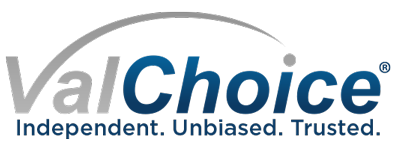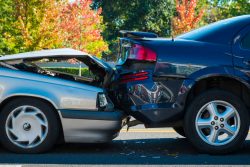If you had an accident on the way to work, would insurance cover your expenses? Surprisingly, many people don’t know the answer to this question. They think they would have adequate protection, but don’t actually know. In an accident caused by an underinsured motorist, you might be out of luck.
Check out the price of car insurance where you live with the ValChoice car insurance calculator. It’s free and it’s easy.
Here are some surprising statistics. One-third of all drivers in the U.S. can be characterized as an underinsured motorist. This is significant because one-third equals one in three cars. In other words, if you’re involved in a three car accident, the odds are that one of the cars will be underinsured. If the underinsured car is the one that caused the accident, this could be a big problem for you.
What is an underinsured motorist?
ValChoice defines an underinsured motorist as a driver who meets any one of the following three criteria:
- Inadequate insurance to replace a reasonably new car that is totaled.
- Insurance coverage that would not pay hospital bills for you or your passengers for more than a couple days.
- The driver does not have insurance.
The situations above are not extreme. Instead, these situations are more common than most people realize.
How many drivers are underinsured or uninsured?
The nationwide average is one in eight drivers are uninsured. These drivers defy state laws and do not buy car insurance. Read our blog “What’s Worse Than an Uninsured Motorist” for more information on this part of the problem.
Making matters worse, data from Verisk Analytics* shows that approximately one in five drivers buys the minimum coverage. Combined, the percentage of uninsured and underinsured drivers equals one-third (33%) of all drivers.
How will the pandemic affect uninsured and underinsured motorists?
A worsening economy is likely to produce increasing levels of both uninsured and underinsure motorists. The reason is simply that as money gets tight, drivers have to make tradeoffs. Unfortunately, no insurance – or not enough – may be what gets dropped to save money.
One Cause of the Underinsured Motorist Problem
The underinsured motorist problem stems partially from state laws that specify minimum coverages that are inadequate to cover reasonable costs. When minimum coverages were instituted they were adequate. However, minimum coverage amounts have risen slowly. Unfortunately, while minimum coverages have risen slowly, medical costs and car repair costs have risen rapidly. Therefore, laws that initially specified adequate coverage amounts are now inadequate.
Consider this situation. The medical cost covered by the average of state minimum coverage amount is $49K per accident. An accident that results in more than a couple people being admitted into a hospital would surpass the $49K average coverage in a couple days. However, under minimum coverage laws, the insurance company of the person that caused the accident has no legal liability beyond this coverage amount.
The Problem is Exacerbated by Technology
Technology has enabled insurance companies to more accurately assess the risk associated with any given driver. The fastest growing companies have used this capability to attract customers. The offer these companies present to drivers is unique in a couple ways:
- Only minimum coverage is typically offered.
- Prices offered are often based on a six month contract.
Insurers benefit by selling minimum coverage policies for the reason that it limits their liability. Additionally, selling six month policies lets insurers raise prices more rapidly than with the old normal of twelve month contracts.
These two factors are contributing to the commoditizing of auto insurance. Unfortunately, the commoditization is at the expense of the better insurance companies. “Better” defined as companies offering excellent claims handling and service.
Want to know the best car insurance companies in your state? It’s easy. Just click the button below. The information is free.
Creating an Unhealthy Market Situation
The long-term affect of low minimum limits is unhealthy for the industry. Here’s the situation. Companies that cover high-risk drivers limit their liability by offering minimum limit policies. However, when the high-risk driver has an accident, they don’t only have accidents involving vehicles driven by other high-risk drivers. Therefore, when a high-risk driver causes an accident, the insurance company for the accident victim ends up covering much of the loss. In effect, minimum limits policies functions as a transfer of loss costs from insurers of high-risk drivers to insurers of low-risk drivers.
This cost transfer drives up the loss ratio of companies insuring low risk drivers. Hence, this leads to a higher cost structure for companies insuring low-risk drivers. Consequently, insurance companies working to commoditize the market gain a cost benefit. In summary, the industry dynamic is as follows:
- High-risk drivers with minimum limits policies transfer the cost of accidents they cause to insurers of the lower risk drivers with which they collide.
- As the number of high-risk drivers with minimum limits policies increases insurers of low risk drivers need to raise rates to cover the costs of the high-risk drivers that hit their policyholders.
- The growing price gap makes the best insurance carriers increasingly less competitive
The Scope of the Problem
According to Verisk Analytics*, approximately 20% of drivers buy the minimum coverage. Minimum coverage varies by state. However, minimum coverage is generally quite low. The average minimum coverage amount across all states is shown below:
- Maximum medical coverage per person = $24K
- Medical coverage maximum per accident (all people) = $49K
- Maximum property damage per accident = $16K
These coverage amounts are nowhere close to the amount necessary to cover the costs of a serious accident. More than a single day in intensive care would consume the full medical coverage for one person. For property damage, anyone driving a reasonably new car can easily have more than $16K in repair or replacement costs.
Do you want to know more about car insurance in your state? If so, click this link. When you see the map of states, click on your state. Next, you will be taken to a webpage loaded with helpful information about your state. The information even includes the names of the best five car insurance companies in the state.
The Solution
Minimum limits that scale up at the pace of costs would solve this problem. Medical limits need to scale at the same rate as health insurance increases. Property damage limits need to scale at the rate of replacing and repairing vehicles.
This solution is not proposing exorbitantly high minimum limits. When limits are excessive, problems with excessive litigation emerge. The objective of this solution is to strike a balance between the two extremes that results in a healthier industry.
Consumers Deserve Insurance Transparency
ValChoice believes anyone required to buy a product or service deserves to know the quality of the service they must buy. Transparency has never before been available for insurance. Technology drives the change that makes transparency possible. Hence, our mission is to provide this much needed information to consumers.
Unfortunately, most people don’t know if they buy insurance from a good provider. Finally, it’s possible to know. The ValChoice analytics engine grades companies on value, claims handling and service.
Learn what to expect from your insurance company with our free report. Get the Premium version to have their score on claims handling included. The claims handling score is a comparison of how the insurance company performs when paying claims. Just click the button below to get a report card on your car insurance company.
* Verisk Analytics, ISO division is a source of information about property/casualty risk, https://www.verisk.com/insurance/brands/iso/


No comments yet.